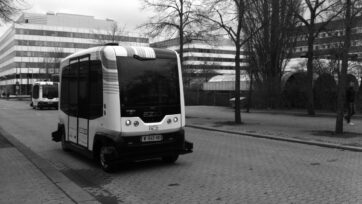(Image credit: LeeRosario / Pixabay)
A research team from the University of Texas at El Paso (UTEP) is studying a groundbreaking technology that could allow electric vehicles (EVs) to charge while in motion. Their findings, published in IEEE Access, focus on the challenges of integrating this charging method into existing power grids.
Dynamic Wireless Power Transfer (DWPT) Technology
The research examines Dynamic Wireless Power Transfer (DWPT), a system that embeds transmitter pads within road surfaces. These embedded transmitters would wirelessly charge EVs as they travel, eliminating the need for frequent stops at charging stations.
“The field of electrified transportation is evolving, and modeling the load demand on our electrical grid is a very significant part of the work,” said Paras Mandal, Ph.D., professor of electrical and computer engineering at UTEP and the study’s principal investigator.
Addressing Range Anxiety and Infrastructure Challenges
Currently, most EVs rely on home charging stations or public charging points, both of which have limitations. Residential charging is slow and can place a strain on household electricity use, while public charging stations are not yet widespread. These challenges contribute to “range anxiety”, a major concern for EV owners who fear running out of battery before reaching a charging station.
DWPT technology could offer a solution by providing continuous power while vehicles are in motion, potentially reducing petroleum fuel consumption, emissions, and noise pollution while improving air quality.
Grid Impact and Load Demand Modeling
Before DWPT can be widely adopted, researchers must assess how it will affect electrical grids. Mandal’s team has developed a new method for measuring load demand—the impact of charging on the grid—through a modified Toeplitz convolution (mCONV) model. This model accounts for variations in vehicle sizes, roadway lengths, and traffic flow to predict how much power would be required under different conditions.
“The next steps in this research will be to understand how DWPT will affect power system stability and reliability,” Mandal explained.
Implications for the Future of EVs
The insights gained from this study could help local and state authorities, as well as utility providers, prepare for the integration of DWPT into transportation infrastructure.
“This new model will help local and state authorities as well as utilities understand what’s involved in implementing DWPT roadways and literally paving the way for more widespread adoption of electric vehicles,” said Kenith Meissner, Ph.D., dean of UTEP’s College of Engineering.
As EV sales continue to rise, with projections reaching 7.2 million annually by 2030, DWPT could become a key innovation in making electric transportation more practical and sustainable.
Reference
2025, ‘Charging electric vehicles while driving: Engineers model grid demand challenges’, TechXplore, viewed 11th February 2025, <https://techxplore.com/news/2025-02-electric-vehicles-grid-demand.html>

























